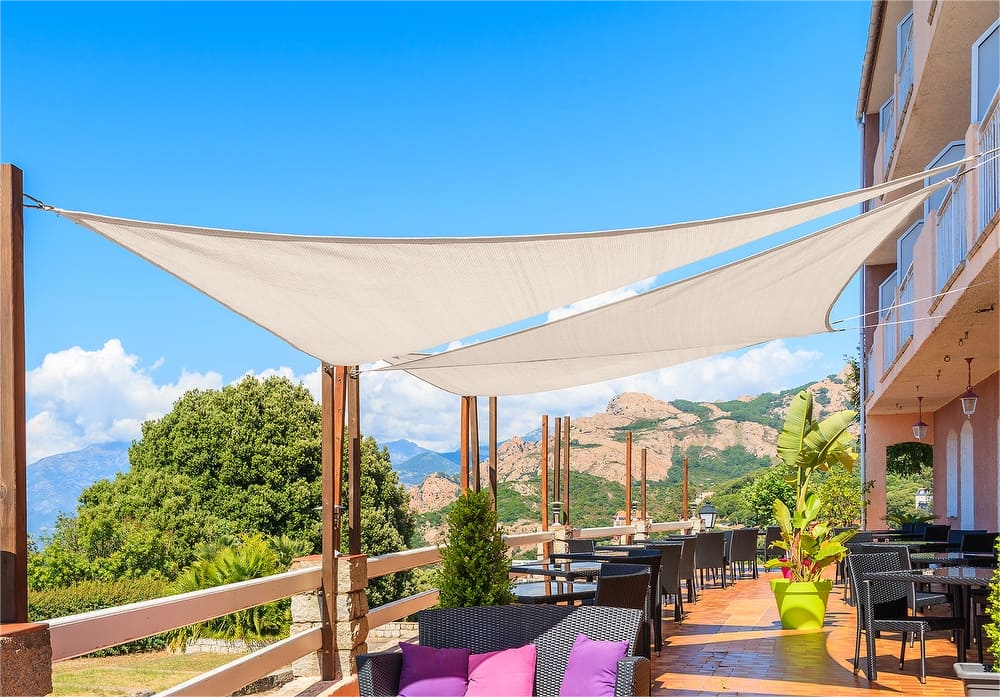Shade sails and wind - will your sail stay stable or go flying?
Well, here's the lowdown on keeping your outdoor haven stable when the breeze picks up.
First off, picture this: you've got your awesome shade sail set up in your backyard, creating the perfect spot to kick back, relax, and maybe even host a few outdoor shindigs. But, uh-oh, the wind starts to blow. What happens to your lovely shade sail? Let's chat about it.
So, what's the deal with shade sails and wind, you ask? It all comes down to a few crucial factors:
Design and Fabric: The type of fabric you use matters. Some materials are more wind-resistant than others, like high-density polyethylene (HDPE). Plus, how you design your sail plays a role. The shape and size matter, as bigger and more complex designs can catch more wind.
Tension is Key: If your sail isn't properly tensioned, it's gonna flap around like a kite in a tornado. That's no good. Get it nice and taut.
Mounting Points and Structure: Your sail needs something sturdy to hang onto. Think of solid mounting points and sturdy posts. You don't want your shade sail to go parasailing with the next gust of wind.
Wind Load: Where you live matters. Wind load depends on your location, local climate, and geography. Know your area's wind habits so you can plan accordingly.
Maintenance Matters: Keep an eye on your sail. Regular check-ups for wear and tear, ensuring proper tension, and dealing with any damage are essential.
Now, here's what you can do to make sure your shade sail sticks around when the wind gets frisky:
Know Your Wind: First things first, understand your local wind patterns. If your area is prone to gusty winds, be prepared. That way, you can select the right materials and design for your shade sail.
Tension: Get your sail nice and tight. Use the right tools and hardware to make sure it's evenly tensioned. A floppy sail is just asking for trouble.
Shape and Size: Think about the shape and size of your sail. Smaller and simpler shapes are more wind-resistant. No need for your sail to mimic a ship's sail, right?

Solid Anchoring: Anchoring points are the unsung heroes of shade sail stability. Ensure they're strong and sturdy, and you're on the right track.
Wind Load Calculation: Figure out your area's wind load and design your sail to handle it. Consult your local building codes for guidance.
Fabric Choice: Go for a fabric known for its durability and wind resistance. High-quality materials, like UV-stabilized HDPE fabric, are your friends.
To keep your shade sail steady in gusty conditions, here's what to do:
Regular Check-ups: Give your shade sail a once-over regularly. Look for tears, fraying, or loose seams. Fix any issues pronto to keep it in tip-top shape.
Retention When Needed: Over time, tension might change due to temperature shifts. Readjust the tension as required to maintain stability.
Lower or Remove: If you know a windy day is coming or you won't use your sail for a while, lower or remove it. By the way, when you take off the sun shade sail, it can be simply cleaned and maintained after removal, which helps to prolong its life. What’s more, less sail in the wind means less chance of a sail adventure.
Temporary Support: For super windy areas, consider adding temporary support like tensioned cables or extra posts when needed.
Pro Help: If you're not sure about the installation and design, get a pro on the case. They'll know how to pick the right materials, set up your sail, and ensure it's anchored properly.
In summary, the stability of awnings in windy conditions is a multifaceted matter. Proper construction, quality canvas, tension maintenance, and regular checks are all essential elements to ensure your awning not only provides a cool and comfortable space but also withstands the challenges posed by the wind.
By paying attention to these details, you can enjoy your shaded retreat regardless of the weather, with the confidence that your awning is both a sanctuary and a steadfast companion in your outdoor space. You'll have a perfect place to cool off, windy or not. When it's windy, remember to give it some extra love. Enjoy your shade.


1 comment
Muchas gracias. ?Como puedo iniciar sesion?